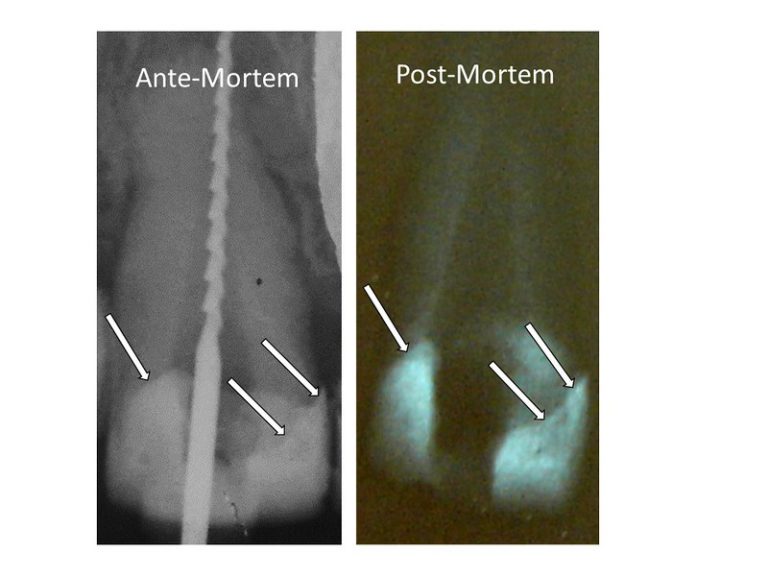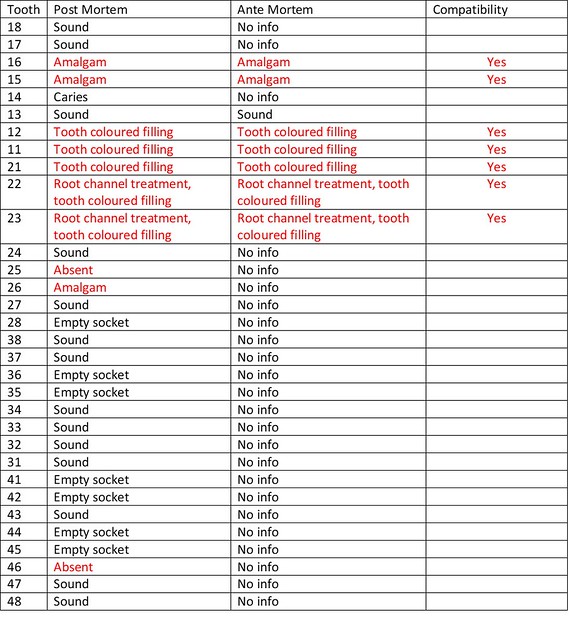Home / History / Archaeology / Forensic Archaeology and Anthropology / Forensic Odontology: A Case Study

Reach your personal and professional goals
Unlock access to hundreds of expert online courses and degrees from top universities and educators to gain accredited qualifications and professional CV-building certificates.
Join over 18 million learners to launch, switch or build upon your career, all at your own pace, across a wide range of topic areas.


 Ante-mortem and post-mortem radiographs from the female victim showing dental fillings
Ante-mortem and post-mortem radiographs from the female victim showing dental fillings
 Ante-mortem and post-mortem radiographs from the female victim showing dental fillings
Ante-mortem and post-mortem radiographs from the female victim showing dental fillings
 A table comparing the post-mortem records of the victim to the ante-mortem records of the person it is suspected to be
A table comparing the post-mortem records of the victim to the ante-mortem records of the person it is suspected to be







